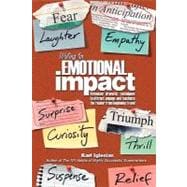|
10 | (9) | |||
|
11 | (1) | |||
|
12 | (1) | |||
|
13 | (1) | |||
|
14 | (1) | |||
|
15 | (1) | |||
|
16 | (1) | |||
|
16 | (1) | |||
|
17 | (1) | |||
|
17 | (2) | |||
|
19 | (5) | |||
|
19 | (1) | |||
|
20 | (1) | |||
|
20 | (1) | |||
|
20 | (1) | |||
|
21 | (1) | |||
|
21 | (1) | |||
|
22 | (1) | |||
|
22 | (2) | |||
|
24 | (14) | |||
|
24 | (1) | |||
|
25 | (1) | |||
|
25 | (1) | |||
|
26 | (1) | |||
|
26 | (1) | |||
|
26 | (2) | |||
|
28 | (1) | |||
|
29 | (1) | |||
|
30 | (4) | |||
|
34 | (1) | |||
|
35 | (1) | |||
|
36 | (2) | |||
|
38 | (11) | |||
|
38 | (1) | |||
|
38 | (1) | |||
|
39 | (1) | |||
|
40 | (1) | |||
|
40 | (2) | |||
|
42 | (1) | |||
|
43 | (3) | |||
|
46 | (3) | |||
|
49 | (28) | |||
|
49 | (1) | |||
|
50 | (5) | |||
|
55 | (1) | |||
|
55 | (1) | |||
|
55 | (1) | |||
|
56 | (5) | |||
|
61 | (1) | |||
|
61 | (1) | |||
|
61 | (6) | |||
|
67 | (7) | |||
|
74 | (3) | |||
|
77 | (36) | |||
|
77 | (1) | |||
|
77 | (1) | |||
|
78 | (1) | |||
|
79 | (1) | |||
|
80 | (4) | |||
|
84 | (4) | |||
|
88 | (5) | |||
|
93 | (8) | |||
|
101 | (6) | |||
|
107 | (2) | |||
|
109 | (1) | |||
|
109 | (1) | |||
|
110 | (3) | |||
|
113 | (10) | |||
|
113 | (1) | |||
|
114 | (1) | |||
|
115 | (3) | |||
|
118 | (2) | |||
|
120 | (2) | |||
|
122 | (1) | |||
|
123 | (24) | |||
|
123 | (1) | |||
|
123 | (1) | |||
|
124 | (1) | |||
|
124 | (1) | |||
|
124 | (1) | |||
|
125 | (5) | |||
|
130 | (1) | |||
|
130 | (1) | |||
|
131 | (2) | |||
|
133 | (8) | |||
|
141 | (6) | |||
|
147 | (23) | |||
|
147 | (1) | |||
|
148 | (2) | |||
|
150 | (3) | |||
|
153 | (1) | |||
|
153 | (5) | |||
|
158 | (3) | |||
|
161 | (6) | |||
|
167 | (1) | |||
|
168 | (1) | |||
|
169 | (1) | |||
|
169 | (1) | |||
|
170 | (56) | |||
|
171 | (1) | |||
|
171 | (3) | |||
|
174 | (4) | |||
|
178 | (1) | |||
|
178 | (17) | |||
|
195 | (10) | |||
|
205 | (6) | |||
|
211 | (11) | |||
|
222 | (2) | |||
|
224 | (1) | |||
|
224 | (1) | |||
|
224 | (2) | |||
|
226 | (4) | |||
|
227 | (1) | |||
|
228 | (1) | |||
|
228 | (2) | |||
| Index | 230 |









